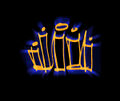Template:Selected anniversaries/September 9: Difference between revisions
No edit summary |
No edit summary |
||
| Line 16: | Line 16: | ||
||1883: Victor Puiseux dies ... mathematician and astronomer. Puiseux series are named after him, as is in part the Bertrand–Diquet–Puiseux theorem. Pic. | ||1883: Victor Puiseux dies ... mathematician and astronomer. Puiseux series are named after him, as is in part the Bertrand–Diquet–Puiseux theorem. Pic. | ||
||1888: Wallace Akers born ... chemist and industrialist. Beginning his academic career at Oxford he specialized in physical chemistry. During the Second World War, he was the director of the Tube Alloys project, a clandestine programme aiming to research and develop British atomic weapons capabilities Pic. | |||
||1892: Amalthea, third moon of Jupiter is discovered by Edward Emerson Barnard. Pic. | ||1892: Amalthea, third moon of Jupiter is discovered by Edward Emerson Barnard. Pic. | ||
Revision as of 06:21, 30 December 2019
1737: Physician and physicist Luigi Galvani born. In 1780, he will discover that the muscles of dead frogs' legs twitch when struck by an electrical spark.
1917: Mathematician and philosopher Georg Cantor publishes new theory of sets derived from Gnomon algorithm functions. Colleagues hail it as "a magisterial contribution to science and art of detecting and preventing crimes against mathematical constants."
1947: First case of a computer bug being found: A moth lodges in a relay of a Harvard Mark II computer at Harvard University.
1975: Viking program: Viking 2 launched. Following a 333-day cruise to Mars, the Viking orbiter will begin returning global images of Mars.
2003: Theoretical physicist and academic Edward Teller dies. He is known colloquially as "the father of the hydrogen bomb", although he did not care for the epithet.
2017: Dennis Paulson of Mars celebrates the forty-second anniversary of the launch of the Viking 2 spacecraft.
- Ink=The Custodian
2018: The Custodian tells a funny story about why you can't go in there.
2018: Updated version of Embassy published. "The old version was so dark, it was barely visible. This version is much more to my taste," says artist Karl Jones.






